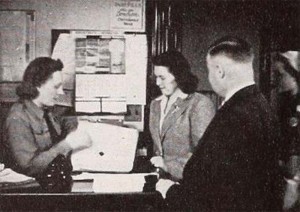
"In the film, a young woman receives a letter about her brother's arrival in the army, which prompts her to ask: "What can I do to help in this war?" The film's answer is to give blood, and it proceeds to show the process of the young woman and her father giving blood at the local Red Cross clinic. The entire procedure is shown, including medical examinations and long sequences in the clinic that explain all the parts of the process. Eventually, this vivid color film shows the actor actually giving blood. To provide drama the film shows an alternation between shots of the woman at church and her injured brother resting in a hospital after Dieppe; it soon reveals that he is being treated with blood transfusions, and we can see that he will soon recover. The film ends with a sequence of shots showing the solider walking down a snowy Ottawa street with a cane, returning home. When he sees from a sign in the window that the woman there gave blood, he is touched by her lifesaving contribution. This silent film is thirty minutes long and blends elements of fictional or dramatized scenes with process sequences at the Ottawa Blood Donor Service. Shot in 16mm color film, it is both a vivid and professional-looking production; indeed, it exemplifies both elements of the practical amateur genre (creative engagement with practical issues) and the wartime necessity of the moment" (Tepperman 93).
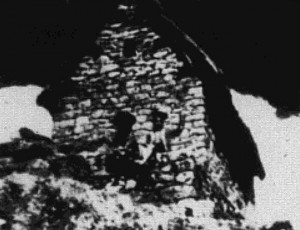
"Tierra de los Incas by Dorothy Ruth Orr, M.D. and Othel G. Goff, APSA, both PSA members of San Francisco, Calif. Dottie and Ot have made a beautiful film on this remote South American civilization of centuries ago. This 16-minute 16mm film was awarded a Ten Best Medal and the Travel Film Award" PSA Journal, Nov. 1971, 42.
"Family scenes outside a house in Greenbank, Keswick as two of the party prepare to leave. The car, a Trojan, reverses out of the garage." (NWFA Online Database)
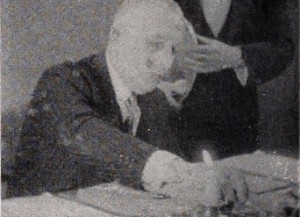
"When a preaching film turns out to be entertaining, the advice it offers is more likely to be remembered and heeded. In Time To Consider, a film that advocates bicycle safety, the Fourfold Film Society dramatized its subject with delightful imagination and refreshing use of the black and white medium. A pompous gentleman, after being splashed by a bus on the way to his club, vents his ire by "writing to the Times." A messenger takes the envelope, which is addressed simply Time," and starts off on his bicycle, only to be run over in traffic. The film then switches to fantasy, as the messenger, dressed now in white livery, delivers the letter to Father Time's heavenly establishment. Father Time, peering at a celestial television screen, observes the various traffic mistakes that mortals make and, between sequences showing unwise behavior, he dictates the rules of proper procedure. The production's few scenes of uneven exposure are more than made up for by its rich imagination, excellent cutting and refreshing camera treatment." Movie Makers, Dec. 1948, 495-496.
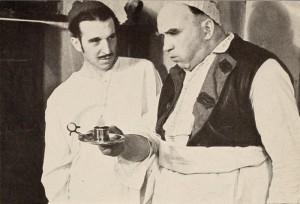
"The misadventures of a tired traveller." Library and Archives Canada.
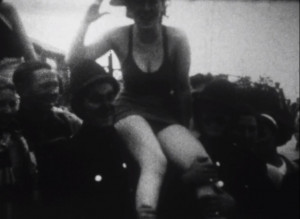
"The excitement of a 1937 holiday starts with the packing of Arthur J. Dawson's initialled suitcase and the train ride from Saltash to Hemsby in Norfolk. Station staff wait to help passengers transfer their luggage to the wooden chalets of Hemsby Holiday Camp. Organised entertainments include following behind a carload of musicians including accordionist, exercising in swimsuits on the beach, silly sports and getting messy with flour and water." (BFI database)
"A film covering a motor journey made by members of the Automobile Club of Southern California during the summer of 1930.... The Land of the Golden Twilight was northern British Columbia, and the tour left from Seattle, travelling through the Cariboo to Hazelton and Kispiox. Scenes included the Stampede at Williams Lake, a dance by medicine men, and many scenic views of northern British Columbia along the highway." (Colin Browne, Motion Picture Production in British Columbia, 1898-1940 (1979), entry #1052.)
The film is listed in Browne's filmography as "With the International Caravan to the Land of the Golden Twilight."
Total Pages: 203